Holy Michael, the Archangel, defend us in battle. Be our safeguard against the wickedness and snares of the devil. May God rebuke him, we humbly pray; and do you, O Prince of the heavenly host, by the power of God cast into hell Satan and all the evil spirits who wander through the world seeking the ruin of souls. Amen.
Read More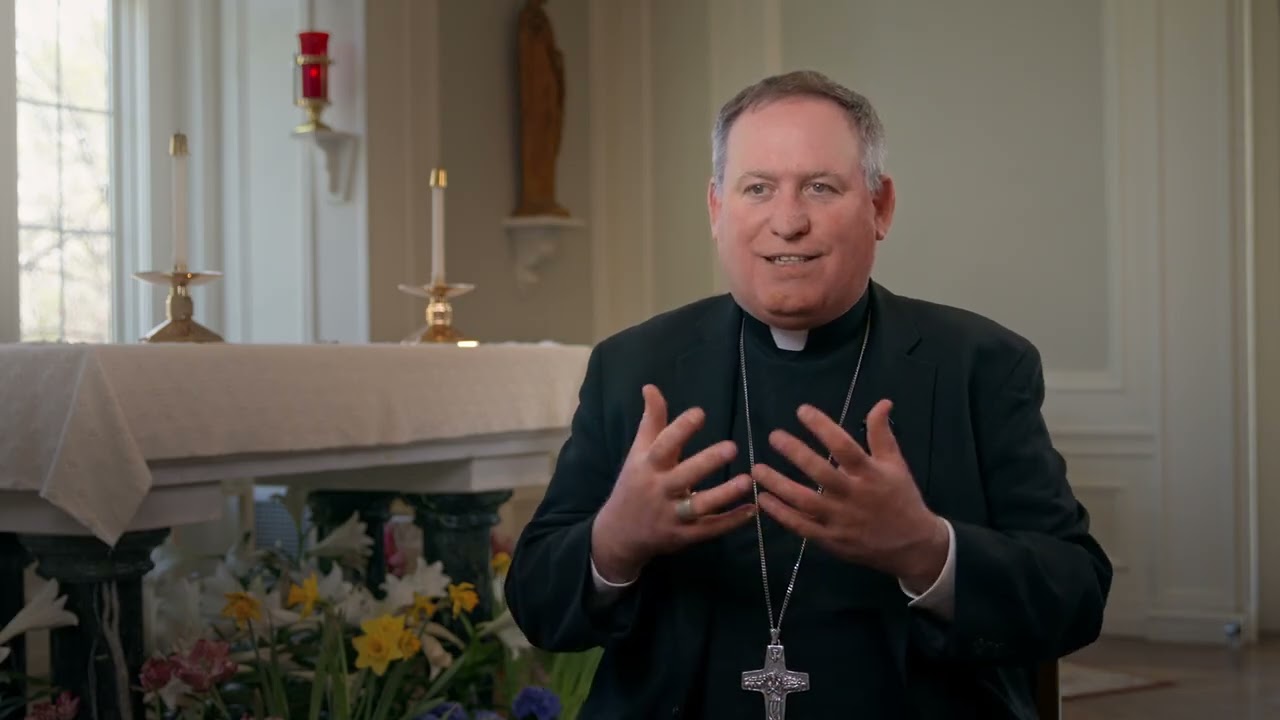
Watch: New Diocesan Ministries Appeal Video #Catholic – ![]()
So many good works of charity by the Paterson Diocese in New Jersey are taking place every day in God’s name all over the three counties it covers: Passaic, Morris, and Sussex.
A new video promoting the 2025 Diocesan Ministries Appeal (DMA) asks diocesan faithful to contribute by highlighting the many programs and ministries that serve the Church of Paterson’s diverse population. Guided by this year’s theme, “Three Counties — One Family of Faith,” the DMA supports Catholic Charities, which cares for people in need; retired priests; seminarian education; and urban Catholic education.

In words, images, and video clips, Bishop Kevin J. Sweeney narrates a guided virtual tour of some of the diocese’s charitable works in each county. They include Catholic Charities programs such as the Partnership for Social Services in Sussex, the Fix It Program in Morris, and the Father English Food Pantry in Passaic, set to reopen soon after extensive renovations.
In the video, Bishop Sweeney says, “In my five years as bishop, I’ve been privileged to see the life-saving work that takes place every day, supported by the Diocesan Ministries Appeal.”
“Your gift to the Diocesan Ministries Appeal will help make dozens of unique and important programs and ministries available in our three counties. I ask for your generous support. Thank you for helping me make the Diocese of Paterson a shining example of God’s love and compassion. Simply put, I cannot do it without you,” Bishop Sweeney says in the video.
Click here to subscribe to our weekly newsletter.
– ![]() So many good works of charity by the Paterson Diocese in New Jersey are taking place every day in God’s name all over the three counties it covers: Passaic, Morris, and Sussex. A new video promoting the 2025 Diocesan Ministries Appeal (DMA) asks diocesan faithful to contribute by highlighting the many programs and ministries that serve the Church of Paterson’s diverse population. Guided by this year’s theme, “Three Counties — One Family of Faith,” the DMA supports Catholic Charities, which cares for people in need; retired priests; seminarian education; and urban Catholic education. In words, images, and video clips, Bishop
So many good works of charity by the Paterson Diocese in New Jersey are taking place every day in God’s name all over the three counties it covers: Passaic, Morris, and Sussex. A new video promoting the 2025 Diocesan Ministries Appeal (DMA) asks diocesan faithful to contribute by highlighting the many programs and ministries that serve the Church of Paterson’s diverse population. Guided by this year’s theme, “Three Counties — One Family of Faith,” the DMA supports Catholic Charities, which cares for people in need; retired priests; seminarian education; and urban Catholic education. In words, images, and video clips, Bishop
A reading from the Letter to the Romans
8:26-30
Brothers and sisters:
The Spirit comes to the aid of our weakness;
for we do not know how to pray as we ought,
but the Spirit himself intercedes with inexpressible groanings.
And the one who searches hearts
knows what is the intention of the Spirit,
because he intercedes for the holy ones
according to God’s will.
We know that all things work for good for those who love God,
who are called according to his purpose.
For those he foreknew he also predestined
to be conformed to the image of his Son,
so that he might be the firstborn
among many brothers.
And those he predestined he also called;
and those he called he also justified;
and those he justified he also glorified.
From the Gospel according to Luke
13:22-30
Jesus passed through towns and villages,
teaching as he went and making his way to Jerusalem.
Someone asked him,
“Lord, will only a few people be saved?”
He answered them,
“Strive to enter through the narrow gate,
for many, I tell you, will attempt to enter
but will not be strong enough.
After the master of the house has arisen and locked the door,
then will you stand outside knocking and saying,
‘Lord, open the door for us.’
He will say to you in reply,
‘I do not know where you are from.’
And you will say,
‘We ate and drank in your company and you taught in our streets.’
Then he will say to you,
‘I do not know where you are from.
Depart from me, all you evildoers!’
And there will be wailing and grinding of teeth
when you see Abraham, Isaac, and Jacob
and all the prophets in the Kingdom of God
and you yourselves cast out.
And people will come from the east and the west
and from the north and the south
and will recline at table in the Kingdom of God.
For behold, some are last who will be first,
and some are first who will be last.”
What does this "narrow door" mean? Why do many not succeed in entering through it? Is it a way reserved for only a few of the chosen? Indeed, at close examination this way of reasoning by those who were conversing with Jesus is always timely: the temptation to interpret religious practice as a source of privileges or security is always lying in wait. Actually, Christ’s message goes in exactly the opposite direction: everyone may enter life, but the door is "narrow" for all. We are not privileged. The passage to eternal life is open to all, but it is "narrow" because it is demanding: it requires commitment, self-denial and the mortification of one’s selfishness. (…)
Salvation, which Jesus brought with his death and Resurrection, is universal. He is the One Redeemer and invites everyone to the banquet of immortal life; but on one and the same condition: that of striving to follow and imitate him, taking up one’s cross as he did, and devoting one’s life to serving the brethren. This condition for entering heavenly life is consequently one and universal. (…) True friendship with Jesus is expressed in the way of life: it is expressed with goodness of heart, with humility, meekness and mercy, love for justice and truth, a sincere and honest commitment to peace and reconciliation. We might say that this is the "identity card" that qualifies us as his real "friends"; this is the "passport" that will give us access to eternal life. (Pope Benedict XVI, Angelus, 26 August 2007)
Read More

Scene from the 2023 Guadalupan Torch Run, arriving in South Carolina. / Credit: Courtesy of Guadalupan Torch Run
Houston, Texas, Oct 28, 2025 / 18:45 pm (CNA).
The Carrera Antorcha Guadalupana (the “Guadalupan Torch Run”) is an annual pilgrimage where runners honor the Blessed Mother and pray for immigrants as they carry a torch from the Basilica of Our Lady of Guadalupe in Mexico City to St. Patrick’s Cathedral in New York City.
Pilgrim runners began their journey on Aug. 30 in Mexico City and so far have carried it through nine Mexican states and over 30 cities. Altogether, they will pass through 14 U.S. states as they journey over 3,000 miles before arriving in New York on Dec. 12, the feast of Our Lady of Guadalupe.
As they pass through each town, the runners are joined by locals, who accompany them for a portion of the route.
The running pilgrims arrived in San Antonio, Texas, on Oct. 27, where they will remain for three days. Catholics at several parishes there are organizing Masses and celebrations, which will include Indigenous Mexican dancers known as “Matachines,” who have performed traditional dances in honor of Our Lady of Guadalupe for hundreds of years.
The torch, known as the Torchana Guadalupana, is lit from the flame at the basilica and is never extinguished during the journey. It “represents the light of faith and the spirit of resilience among immigrants,” according to the group’s San Antonio organizer, Luis Garcia.
Garcia, who is an immigrant himself and has benefited from the Deferred Action for Childhood Arrivals (DACA) program established by President Barack Obama in 2012, started running in the pilgrimage as a high schooler in 2009. He became a leader five years ago.
Garcia said it brings “religious hope to those who need it, both in the U.S. and Mexico, and it shows them that Mother Mary is looking out for her children here and in Mexico.”
He told CNA the pilgrimage, organized by a New York-based group called Asociación Tepeyac, began in 2002 as a memorial Mass and run to honor Hispanics who died in the World Trade Center terrorist attack. Its purpose evolved over the years into two themes: honoring the Virgin Mary and praying for human rights and justice for immigrants.
In the first years of the pilgrimage, then-Archbishop Edward Egan of New York provided logistical and spiritual backing to Asociación Tepeyac, even suggesting it begin a pilgrimage that would start in Mexico and end in New York.

The pilgrimage has come to symbolize “the enduring bond between the Mexican and American communities,” according to Garcia, and the “lit torch is a symbol of faith, hope, and unity” among Christians and between families who are separated by the border.
San Antonio Archbishop Gustavo García-Siller said in a statement to CNA that the Guadalupan Torch run “carries the flame of faith with devotion, honoring Our Lady of Guadalupe. In our pilgrimage on this earth, she shows us that salvation is not a reward for our own merits but a free gift of God’s love.”
“May this torch continue to light our path, bringing us ever closer to her Son, who is our savior and who brings us to our final destination, which is his glory with the Father,” the archbishop concluded.
As an undocumented immigrant who was brought here as a child and who hopes to become a citizen eventually, Garcia said he is “a little worried” for himself, but he is still pushing through and hoping to bring faith, hope, and awareness to people.
Because he is undocumented, he cannot travel to Mexico to visit the basilica. He said that through the pilgrimage, however “a little piece of Mexico comes over.”
“I can travel with the Virgin and, through her intercession, can pray for all of these people who don’t have a true home.”
Recent immigration raids have led to dwindling numbers of participants, Garcia said, but 8,000 runners’ hands will still have touched the torch by the time it reaches St. Patrick’s Cathedral.
The torch is made of galvanized metal, he said, and by the end of the journey, the bottom of it becomes shiny from wear.
“That so many hands have touched this torch,” Garcia said, “is powerful. Families that participated in Mexico and are divided from their family here by the border have that connection: ‘I held the torch and I know my family in the U.S. has touched it, too. We held something together.’”
Read More![Conference recalls papal declaration on Catholic-Jewish relations - #Catholic -
Rabbi Joshua Stanton attends “Called to Friendship: Nostra Aetate at 60,” an event organized by the Philos Project and the National Shrine of Pope John Paul II on Oct. 28, 2025. / Credit: Jack Haskins
Washington, D.C., Oct 28, 2025 / 18:21 pm (CNA).
Calls to deepen Jewish-Catholic relations echoed at an event marking the 60th anniversary of Nostra Aetate, the Vatican II declaration by Pope Paul VI on the relation of the Church to non-Christian religions. At “Called to Friendship: Nostra Aetate at 60,” an event organized by the Philos Project and the Saint John Paul II National Shrine, Jews and Catholics from across the country gathered on Oct. 28 to remember Nostra Aetate, a document many believe permanently altered the course of Catholic-Jewish relations.“One of the challenges of Catholic-Jewish collaboration is getting more people in the room,” Rabbi Joshua Stanton told CNA on the sidelines of the conference. “And getting more people asking new and challenging questions of each other from a place of love and respect.” He further described Nostra Aetate as “miraculous” for its official establishment of Jewish-Catholic solidarity. Earlier in the day, Stanton, who is the associate vice president at the Jewish Federations in North America and oversees interfaith relations, said he had been inspired by the recent synodal process carried out by the late Pope Francis and called for a “Jewish-Catholic synod.” “For a very long time, these dialogues have focused on clergy, which makes a great deal of sense,” he continued in the interview. “At this point, if we are to see Nostra Aetate lived in full all around the world in different communities, we need laypeople to be more at the front of those conversations.” Stanton noted a shift to expand lay leadership within Jewish communities and within certain Catholic spheres such as education or other ministries, which he said has led to laypeople “getting empowered more and more.”“And so I think they deserve a seat at the table for dialogue and also for helping us translate these really important documents and declarations into tangible change on the ground,” he concluded.Speakers at the event included John Paul II biographer George Weigel; National Review Editor Kathryn Jean Lopez; Coalition of Catholics Against Antisemitism co-founder Mary Eberstadt; Sister Maris Stella, SV, vicar general of the Sisters of Life; Gavin D’Costa of the Pontifical University of St. Thomas Aquinas in Rome; and Philos Catholic Director Simone Rizkallah. Ahead of the event, a group called Catholics United Against the Jews tweeted against the conference, writing: “The ‘Hebrew Catholics’ like Gideon Lazar and their patron Paul Singer’s (Jewish) Philos Project refuse to interpret Nostra Aetate in light of tradition. They use it to smuggle dual covenant theology and Jewish worship into the Church. Faithful Catholics should shun them entirely.”“A group styling itself ‘Catholics United Against the Jews’ claims fidelity to the Second Vatican Council — yet in its very name and activity repudiates not only the magisterial teaching of Pope St. John XXIII, Pope Paul VI, and Pope St. John Paul II but also the sacred Scriptures and the living tradition of the Church,” Rizkallah told CNA in response to the post.“To profess acceptance of Vatican II while embracing a posture that directly violates these foundational teachings is neither coherent nor faithful; it is a betrayal of both the Gospel and the magisterium,” she added.“It is difficult to see Catholics, especially younger Catholics, finding themselves drawn to conspiratorial movements such as ‘Catholics United Against the Jews,’” she said, further reflecting on broader trends of antisemitism among Catholics. “The new antisemitism reveals a deeper spiritual and cultural crisis: the epidemic of loneliness, exacerbated by digital overuse, confusion about one’s vocational call, and Western material comfort that dulls the soul.”“Beneath it lies a sincere but misdirected hunger for radical truth. Yet in the absence of a compelling and incarnate proposal of the Gospel — what [Communion and Liberation founder] Monsignor Luigi Giussani called the risk of education — that desire is easily hijacked by false ideologies.” She concluded: “The Church must respond not with condemnation alone but with the fullness of truth and love that only our Jewish messiah offers.” Charlie Cohen, a Jewish student of Middle East policy studies from Omaha, Nebraska, came to the event at Rizkallah’s invitation. Describing what Nostra Aetate means to him as Jewish person, he told CNA: “I think it’s very important in setting the foundation of the continuation of productive relations between the Catholic and Jewish communities, for sure.”Growing up in a predominantly Catholic community in Omaha, Cohen emphasized the importance of the spread of Nostra Aetate’s message, saying: “What tends to sometimes get brushed over very quickly [between Catholics and Jews] is negative feelings towards each other, which is just mainly ignorance.”](https://unitedyam.com/wp-content/uploads/2025/10/conference-recalls-papal-declaration-on-catholic-jewish-relations-catholic-rabbi-joshua-stanton-attends-called-to-friendship-nostra-aetate-at-60-an-event-organized-by-the.webp)

Rabbi Joshua Stanton attends “Called to Friendship: Nostra Aetate at 60,” an event organized by the Philos Project and the National Shrine of Pope John Paul II on Oct. 28, 2025. / Credit: Jack Haskins
Washington, D.C., Oct 28, 2025 / 18:21 pm (CNA).
Calls to deepen Jewish-Catholic relations echoed at an event marking the 60th anniversary of Nostra Aetate, the Vatican II declaration by Pope Paul VI on the relation of the Church to non-Christian religions.
At “Called to Friendship: Nostra Aetate at 60,” an event organized by the Philos Project and the Saint John Paul II National Shrine, Jews and Catholics from across the country gathered on Oct. 28 to remember Nostra Aetate, a document many believe permanently altered the course of Catholic-Jewish relations.
“One of the challenges of Catholic-Jewish collaboration is getting more people in the room,” Rabbi Joshua Stanton told CNA on the sidelines of the conference. “And getting more people asking new and challenging questions of each other from a place of love and respect.” He further described Nostra Aetate as “miraculous” for its official establishment of Jewish-Catholic solidarity.
Earlier in the day, Stanton, who is the associate vice president at the Jewish Federations in North America and oversees interfaith relations, said he had been inspired by the recent synodal process carried out by the late Pope Francis and called for a “Jewish-Catholic synod.”
“For a very long time, these dialogues have focused on clergy, which makes a great deal of sense,” he continued in the interview. “At this point, if we are to see Nostra Aetate lived in full all around the world in different communities, we need laypeople to be more at the front of those conversations.”
Stanton noted a shift to expand lay leadership within Jewish communities and within certain Catholic spheres such as education or other ministries, which he said has led to laypeople “getting empowered more and more.”
“And so I think they deserve a seat at the table for dialogue and also for helping us translate these really important documents and declarations into tangible change on the ground,” he concluded.
Speakers at the event included John Paul II biographer George Weigel; National Review Editor Kathryn Jean Lopez; Coalition of Catholics Against Antisemitism co-founder Mary Eberstadt; Sister Maris Stella, SV, vicar general of the Sisters of Life; Gavin D’Costa of the Pontifical University of St. Thomas Aquinas in Rome; and Philos Catholic Director Simone Rizkallah.
Ahead of the event, a group called Catholics United Against the Jews tweeted against the conference, writing: “The ‘Hebrew Catholics’ like Gideon Lazar and their patron Paul Singer’s (Jewish) Philos Project refuse to interpret Nostra Aetate in light of tradition. They use it to smuggle dual covenant theology and Jewish worship into the Church. Faithful Catholics should shun them entirely.”
“A group styling itself ‘Catholics United Against the Jews’ claims fidelity to the Second Vatican Council — yet in its very name and activity repudiates not only the magisterial teaching of Pope St. John XXIII, Pope Paul VI, and Pope St. John Paul II but also the sacred Scriptures and the living tradition of the Church,” Rizkallah told CNA in response to the post.
“To profess acceptance of Vatican II while embracing a posture that directly violates these foundational teachings is neither coherent nor faithful; it is a betrayal of both the Gospel and the magisterium,” she added.
“It is difficult to see Catholics, especially younger Catholics, finding themselves drawn to conspiratorial movements such as ‘Catholics United Against the Jews,’” she said, further reflecting on broader trends of antisemitism among Catholics. “The new antisemitism reveals a deeper spiritual and cultural crisis: the epidemic of loneliness, exacerbated by digital overuse, confusion about one’s vocational call, and Western material comfort that dulls the soul.”
“Beneath it lies a sincere but misdirected hunger for radical truth. Yet in the absence of a compelling and incarnate proposal of the Gospel — what [Communion and Liberation founder] Monsignor Luigi Giussani called the risk of education — that desire is easily hijacked by false ideologies.”
She concluded: “The Church must respond not with condemnation alone but with the fullness of truth and love that only our Jewish messiah offers.”
Charlie Cohen, a Jewish student of Middle East policy studies from Omaha, Nebraska, came to the event at Rizkallah’s invitation. Describing what Nostra Aetate means to him as Jewish person, he told CNA: “I think it’s very important in setting the foundation of the continuation of productive relations between the Catholic and Jewish communities, for sure.”
Growing up in a predominantly Catholic community in Omaha, Cohen emphasized the importance of the spread of Nostra Aetate’s message, saying: “What tends to sometimes get brushed over very quickly [between Catholics and Jews] is negative feelings towards each other, which is just mainly ignorance.”
Read More![Protestant congregation in Michigan fights township over fines, limits on religious activity - #Catholic -
A Protestant congregation in Michigan is facing $4,500 in fines and ongoing restrictions on their religious activity imposed by Windsor Township, according to their lawyers. / Credit: Roman Zaiets/Shutterstock
Washington, D.C. Newsroom, Oct 28, 2025 / 17:45 pm (CNA).
A Protestant congregation in Michigan is facing $4,500 in fines and ongoing restrictions on their religious activity imposed by Windsor Township, according to their lawyers.The Sanctum of One God Church asserts the township has delayed permit processing and has imposed restrictions on the congregation that curtail its religious activity. The congregation’s lawyers at First Liberty Institute argue that the township is violating First Amendment protections and other federal laws related to religious land use, and that the government’s actions could affect any religious organization trying to establish a parish or ministry.The township approved a “temporary certificate of occupancy,” which restricts operating hours to Tuesdays and Wednesdays from 6 p.m. to 9:30 p.m. and Thursdays from 7 a.m. to 10 a.m., a year after the church opened its doors in October 2024. The township also permitted one morning service on Sundays.Under the rules, the congregation is not permitted to host wedding receptions, meetings, community events, or fundraisers. The thousands of dollars in fines stem from hosting three weddings, the lawyers said in an Oct. 22 letter.The township is restricting the church’s capacity to 50 people, even though the property can hold 300 people in accordance with the Michigan Fire Code, according to the letter.The letter argues: “No other secular assembly in the township is subjected to such restrictive operating hours or capacity limitations.”According to the letter, the congregation received “overwhelmingly positive” public support at a township hearing back in March. One of the strongest opponents, it notes, was Beth Shaw, the township’s supervisor and zoning administrator, whose property is adjacent to the congregation. Shaw did not immediately reply to a request for comment.“It’s unthinkable that anyone in the Township of Windsor’s leadership would be so anti-religious that they would oppose a neighborhood church’s constitutionally protected right to freely engage in its religious activities,” Ryan Gardner, who serves as senior counsel for First Liberty, said in a statement.“The Constitution and federal law forbid government officials from intimidating and preventing churches from using their property as a place to exercise their religious beliefs,” he said.Gardner told CNA that he has recently seen “a lot of issues pop up around the country” with local governments restricting churches, food banks, homeless shelters, and other facilities by using zoning rules as a justification.He also expressed concern about the potential conflict of interest from Shaw, who “does not want this church to be in her backyard.”Gardner noted that before the Sanctum of One God Church was formed, a separate church occupied the building for nearly 60 years without these types of restrictions. “This church has been there longer than her,” he said.He argued that such actions violate the First Amendment when a governmental body is “targeting someone who’s using their property for religious [purposes]” or “interfering or preventing people from having religious services.”Gardner compared the case to restrictions during COVID-19, when Catholic churches and other religious groups sued state governments for facing stricter rules than secular organizations.](https://unitedyam.com/wp-content/uploads/2025/10/protestant-congregation-in-michigan-fights-township-over-fines-limits-on-religious-activity-catholic-a-protestant-congregation-in-michigan-is-facing-4500-in-fines-and-ongoing-restrictions.webp)

A Protestant congregation in Michigan is facing $4,500 in fines and ongoing restrictions on their religious activity imposed by Windsor Township, according to their lawyers. / Credit: Roman Zaiets/Shutterstock
Washington, D.C. Newsroom, Oct 28, 2025 / 17:45 pm (CNA).
A Protestant congregation in Michigan is facing $4,500 in fines and ongoing restrictions on their religious activity imposed by Windsor Township, according to their lawyers.
The Sanctum of One God Church asserts the township has delayed permit processing and has imposed restrictions on the congregation that curtail its religious activity. The congregation’s lawyers at First Liberty Institute argue that the township is violating First Amendment protections and other federal laws related to religious land use, and that the government’s actions could affect any religious organization trying to establish a parish or ministry.
The township approved a “temporary certificate of occupancy,” which restricts operating hours to Tuesdays and Wednesdays from 6 p.m. to 9:30 p.m. and Thursdays from 7 a.m. to 10 a.m., a year after the church opened its doors in October 2024. The township also permitted one morning service on Sundays.
Under the rules, the congregation is not permitted to host wedding receptions, meetings, community events, or fundraisers. The thousands of dollars in fines stem from hosting three weddings, the lawyers said in an Oct. 22 letter.
The township is restricting the church’s capacity to 50 people, even though the property can hold 300 people in accordance with the Michigan Fire Code, according to the letter.
The letter argues: “No other secular assembly in the township is subjected to such restrictive operating hours or capacity limitations.”
According to the letter, the congregation received “overwhelmingly positive” public support at a township hearing back in March.
One of the strongest opponents, it notes, was Beth Shaw, the township’s supervisor and zoning administrator, whose property is adjacent to the congregation. Shaw did not immediately reply to a request for comment.
“It’s unthinkable that anyone in the Township of Windsor’s leadership would be so anti-religious that they would oppose a neighborhood church’s constitutionally protected right to freely engage in its religious activities,” Ryan Gardner, who serves as senior counsel for First Liberty, said in a statement.
“The Constitution and federal law forbid government officials from intimidating and preventing churches from using their property as a place to exercise their religious beliefs,” he said.
Gardner told CNA that he has recently seen “a lot of issues pop up around the country” with local governments restricting churches, food banks, homeless shelters, and other facilities by using zoning rules as a justification.
He also expressed concern about the potential conflict of interest from Shaw, who “does not want this church to be in her backyard.”
Gardner noted that before the Sanctum of One God Church was formed, a separate church occupied the building for nearly 60 years without these types of restrictions. “This church has been there longer than her,” he said.
He argued that such actions violate the First Amendment when a governmental body is “targeting someone who’s using their property for religious [purposes]” or “interfering or preventing people from having religious services.”
Gardner compared the case to restrictions during COVID-19, when Catholic churches and other religious groups sued state governments for facing stricter rules than secular organizations.
Read More


According to the documents released earlier this year, the FBI and DOJ weaponized their power to target President Trump, former Vice President Mike Pence, and their allies through a probe dubbed “Arctic Frost.” “Operation Arctic Frost” was a taxpayer-funded witch hunt launched in April 2022 that seized government-issued cell phones belonging to Trump and Pence while conducting a barrage of interviews across the country.
The post New Arctic Frost Documents Reveal Widespread Corruption – More Than 100 Individuals Under Investigation Including Ed Martin, Bannon, Giuliani, Peter Navarro and Others appeared first on The Gateway Pundit.
Read More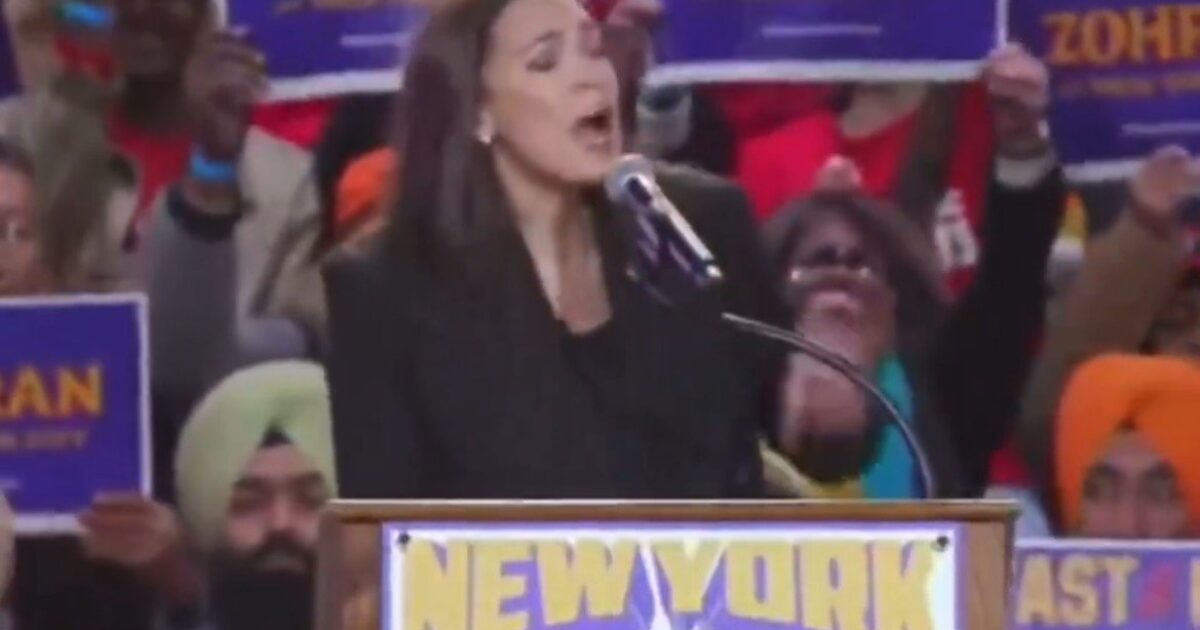


Childless Rep.
The post Mean Girl AOC Tells New Mother Riley Gaines to “Get a Real Job” appeared first on The Gateway Pundit.
Read More
NOAA says Americans in more than a dozen states could catch a glimpse of the aurora on Oct. 28 and 29.
Read More


A federal judge on Tuesday indefinitely barred President Trump from firing federal workers during the Schumer Shutdown.
The post BREAKING: Clinton Judge Indefinitely Bars Trump From Firing Federal Workers During Schumer Shutdown appeared first on The Gateway Pundit.
Read More
Members of Denville college enjoy New York City sites #Catholic – ![]()
Students, faculty, and friends of Assumption College for Sisters in Denville, N.J. on Oct. 22 enjoyed an enlightening and educational trip to the United Nations and St. Patrick’s Cathedral in New York City.
Sister of Charity Pauline Demek is the president of Assumption College for Sisters.
Click here to subscribe to our weekly newsletter.
– ![]() Students, faculty, and friends of Assumption College for Sisters in Denville, N.J. on Oct. 22 enjoyed an enlightening and educational trip to the United Nations and St. Patrick’s Cathedral in New York City. Sister of Charity Pauline Demek is the president of Assumption College for Sisters. Click here to subscribe to our weekly newsletter.
Students, faculty, and friends of Assumption College for Sisters in Denville, N.J. on Oct. 22 enjoyed an enlightening and educational trip to the United Nations and St. Patrick’s Cathedral in New York City. Sister of Charity Pauline Demek is the president of Assumption College for Sisters. Click here to subscribe to our weekly newsletter.
“Comets are like cats. They both have tails and do what they want,” said comet discoverer David Levy many times. Well, Comet C/2025 A6 (Lemmon) is proving his words true. Most comet-watchers thought that Lemmon would reach its brightest October 21 when it was closest to Earth. But it continued to brighten for several days past that date.Continue reading “Comet Lemmon is still a worthy target”
The post Comet Lemmon is still a worthy target appeared first on Astronomy Magazine.
Read More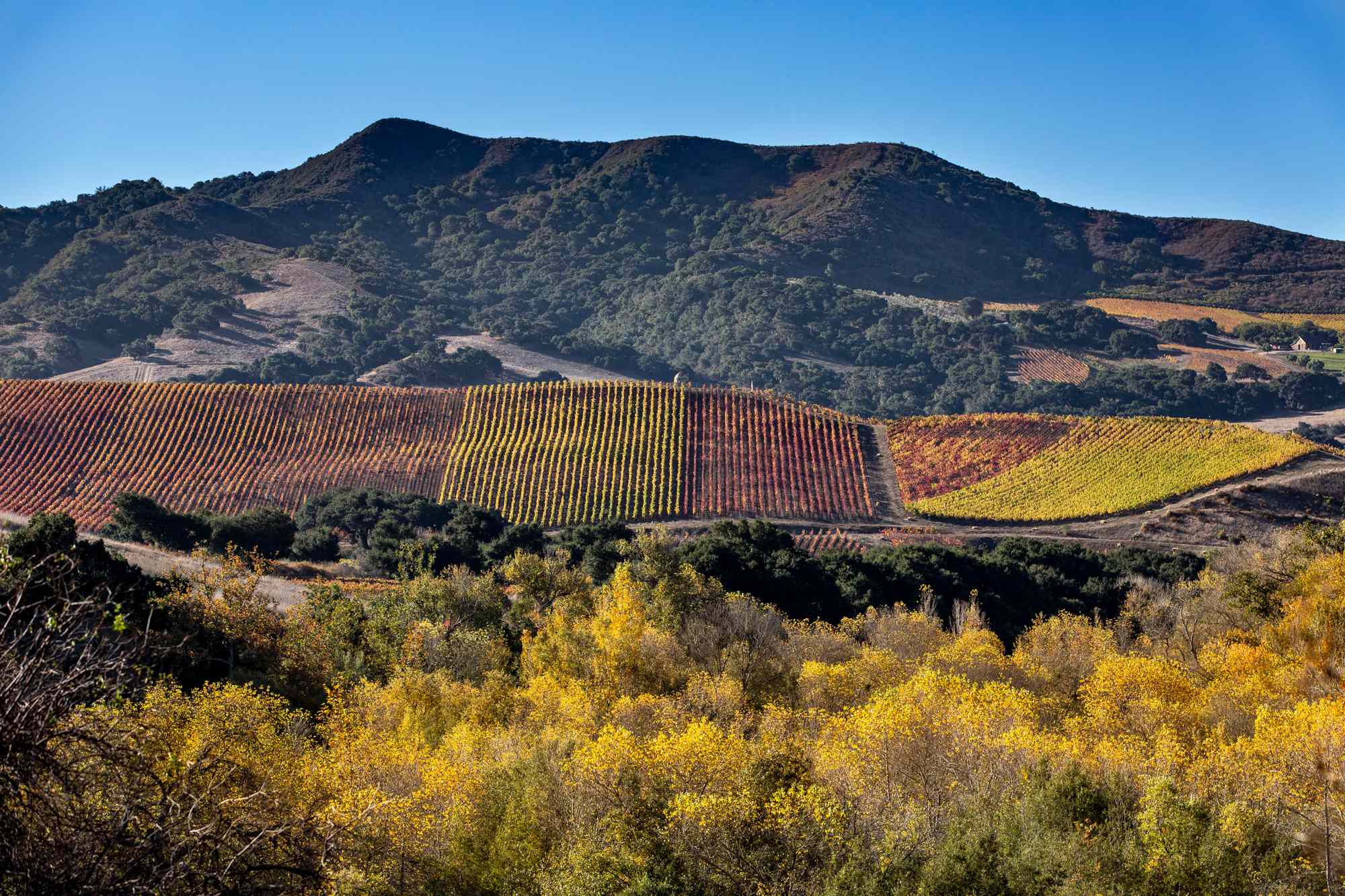
Buellton, California, is home to the longest zip line in the state and a movie-famous motel.
Read More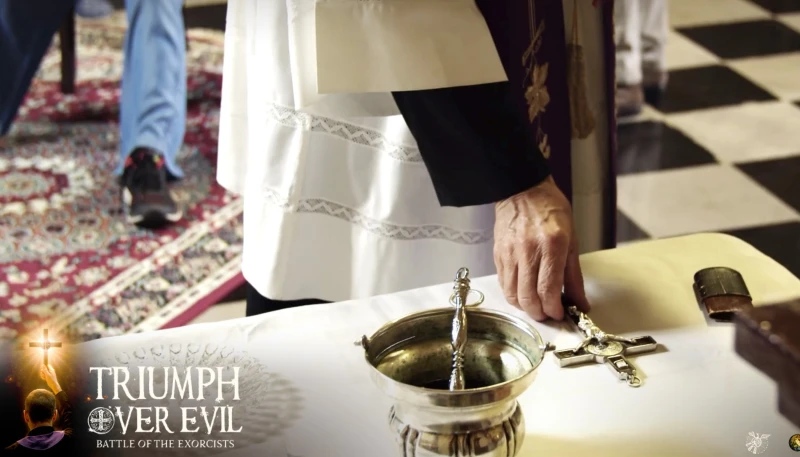

“Triumph Over Evil: Battle of the Exorcists” will be in theaters for one day only on Oct. 30, 2025, and aims to answer questions regarding the truth about exorcisms. / Credit: Goya Producciones
CNA Staff, Oct 28, 2025 / 07:00 am (CNA).
Who is the devil? What is an exorcism? How do you protect yourself from demonic attacks? These are some of the questions a new film titled “Triumph Over Evil: Battle of the Exorcists” aims to answer.
Approved by the International Association of Exorcists, a prominent pontifical association, “Triumph Over Evil” is the first authoritative documentary to delve into the various aspects of demonic possession and exorcism as well as the how the Catholic priesthood and the Blessed Virgin Mary take part in the battle against evil.
The film, which includes never-before-seen commentary from Vatican exorcist Father Gabriele Amorth and others, will be in theaters for one day only on Oct. 30.
Giovanni Ziberna, a former atheist who converted to Catholicism, directs the film.
Despite growing up in an atheist household, Ziberna told CNA in an interview that he always felt like God existed.
“The beauty of creation always made me feel that there had to be something more,” he said.
The Italian film director shared that it was not until he and his wife were asked to work on a project on the life of St. Veronica Giuliani — an Italian nun and mystic who belonged to the Capuchin Poor Clares — that he first encountered God. He explained that after receiving a blessing for protection from the priests involved in the project, he began to feel a “fire starting from my feet and rising up all over my body.”
“This fire burned away all my preconceived ideas, my pride, my ego, what I thought about God,” he said. “In that moment, I realized that it was God who humbled himself to embrace us in our smallness and misery and also that fire lit in me the desire to conversion, to be baptized; and the desire to know the faith and the Scriptures.”
From that point on, he and his wife started their faith journey. They began receiving the sacraments, getting baptized as well as baptizing their children, and having their civil marriage recognized by the Catholic Church.
After becoming Catholic, Ziberna had the opportunity to assist in the ministry of exorcism, where he served as a firsthand witness. This experience inspired him to create the film as a way to show the truth about exorcisms, in contrast to what Hollywood depicts.
He explained that there is a lot of “misinformation” surrounding this topic, as well as a lack of “theological background,” making it “easy to fall in the devil’s trap.”
Through the film, Ziberna said he wants to “show what a real exorcism is” and how it serves as a “spiritual moment full of light where God’s power wins over darkness.”
Ziberna said he hopes viewers will come away with more knowledge, a desire to “stay closer to God,” and a reminder that the “only real winner over evil is God.”
Read More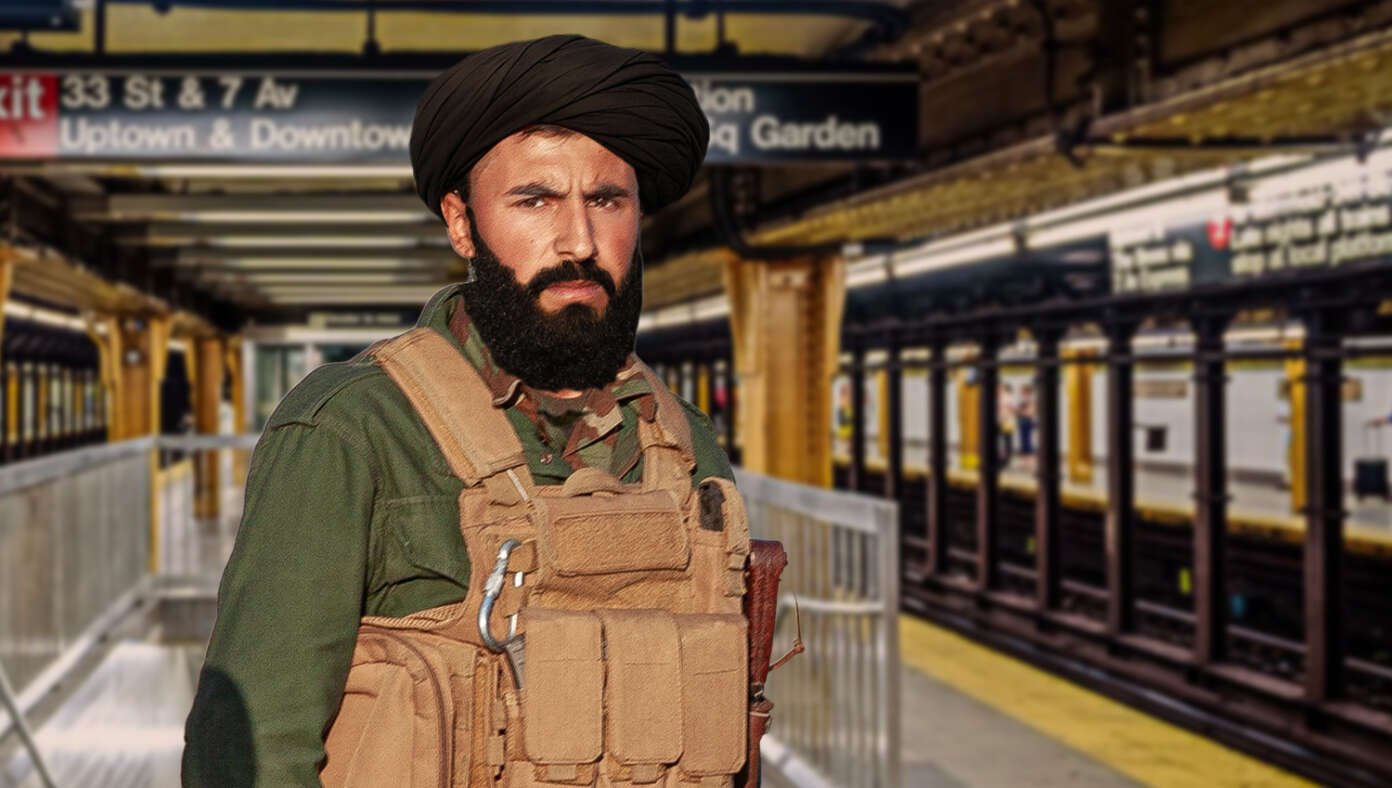
NEW YORK CITY, NY — Local terrorist Muhammad Mohammed al Muhammad shared a heart-wrenching story about how he got dirty looks while boarding the subway in a bulletproof vest after 9/11.
Read More
President Trump has bulldozed part of the White House to make room for a new grand ballroom, leaving America to lament the loss of the storied, majestic East Wing. The list of irreplaceable artifacts lost in the demo may shock you.
Read More
:max_bytes(150000):strip_icc():format(jpeg)/TAL-northern-lights-minnesota-NORTHERNLIGHTSTN1025-d2954be31e08405f9c876b1d94f2c541.jpg)
:max_bytes(150000):strip_icc():format(jpeg)/TAL-lead-image-BUELLTONCA1025-0b723191b1084c8987f53c32b77559b9.jpg)
